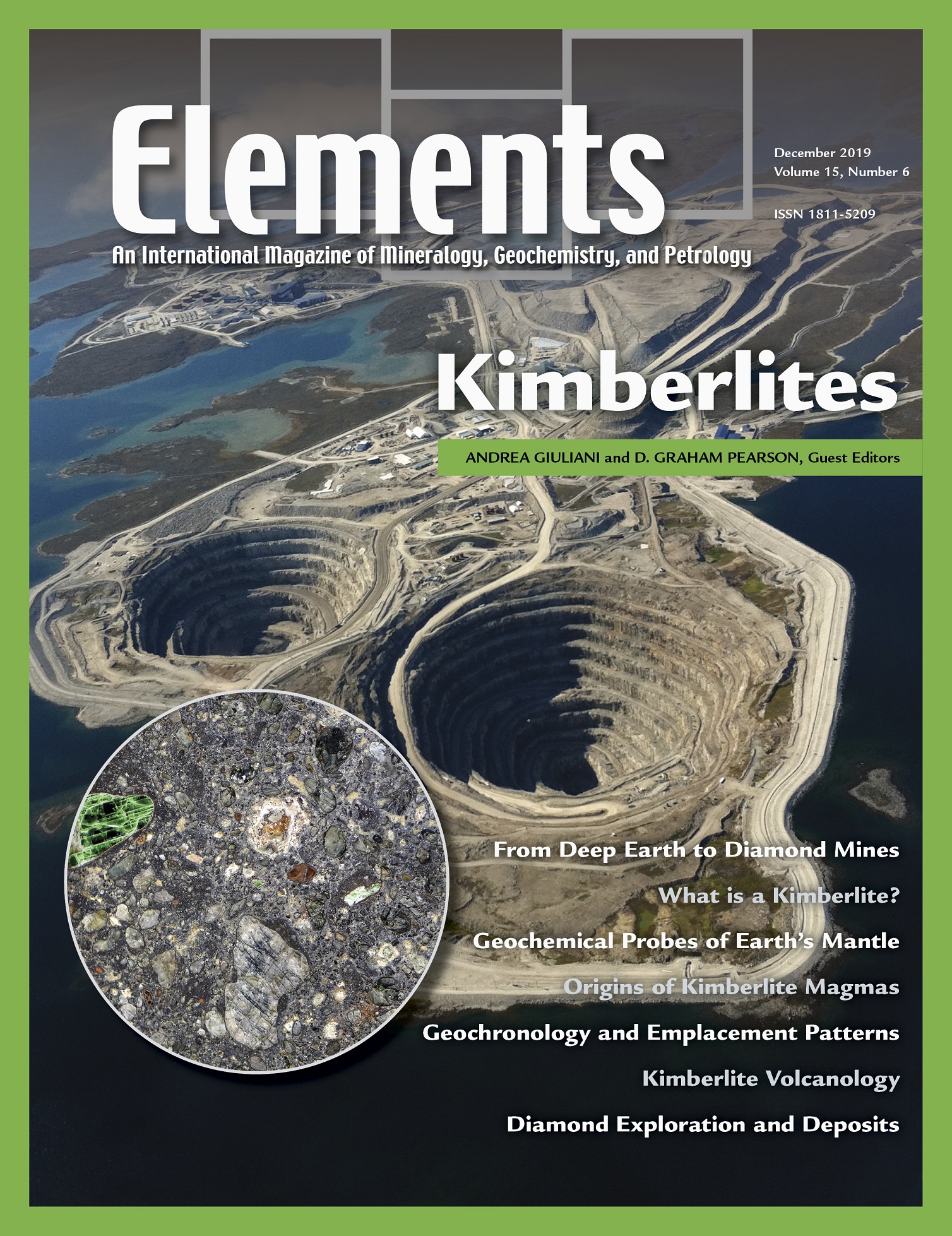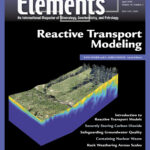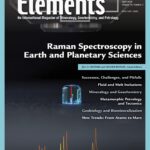Kimberlites, December 2019, Vol. 15, No. 6
$20.00
Kimberlites are the most deeply derived of all volcanic rocks, as well as the host rock for most of the world’s diamond mines. Kimberlites, therefore, provide unique snap-shots of magma genesis and mantle evolution in the deep Earth well into the diamond stability field (>150 km and, potentially, >700 km).
Kimberlites
December 2019, Vol. 15, No. 6
Kimberlites are the most deeply derived of all volcanic rocks, as well as the host rock for most of the world’s diamond mines. Kimberlites, therefore, provide unique snap-shots of magma genesis and mantle evolution in the deep Earth well into the diamond stability field (>150 km and, potentially, >700 km). Despite over 100 years of study, the origin of this complex rock-type remains the subject of intense debate. This thematic issue summarizes current knowledge and controversies on kimberlite formation, including key aspects of the petrology, geochemistry and volcanology of these unique rocks. It shows how kimberlites can be successfully dated, and explore links between the temporal and spatial distribution of kimberlites and known geological events. Diamond exploration and resource evaluation methods are reviewed to demonstrate the inextricable link between an accurate understanding of the characteristics of kimberlites, their entrained mantle cargo, and diamonds.
Why You’ll Love Elements Magazine:
- Expert Contributors: Articles written by renowned researchers in the field of geoscience.
- Engaging Content: Join a community of readers who are passionate about Elements.
- Exceptional Quality: Each issue is printed on high-quality paper with stunning visuals and detailed illustrations that bring complex scientific concepts to life.
Order your copy of the December 2019 issue of Elements magazine today and explore kimberlites.
Related products
-
Fluids in Planetary Systems, January 2005, Vol. 1, No. 1
$20.00Water and other geofluids play an important role in the geochemical and rheological evolution of the Earth and other bodies in the solar system. These fluids are responsible for the formation of hydrothermal mineral deposits, affect eruption behavior in volcanic systems and the geophysical properties of the mantle, and significantly affect the way in which rocks deform and fracture.
-
Platinum-Group Elements, August 2008, Vol. 4, No. 4
$20.00The geoscientific and economic significance of the PGE is immense. Due to their extreme siderophile and chalcophile behaviour, the PGE are highly sensitive tracers of geological processes involving metal and sulfide phases.
-
On The Cutting Edge: Teaching Mineralogy, Petrology, And Geochemistry, April 2007, Vol. 3, No. 2
$20.00New advances in research on learning have important implications for teaching mineralogy, petrology, and geochemistry. Effective instructional practices are increasingly student centered, address diverse student learning styles, and employ a variety of active-learning strategies.






